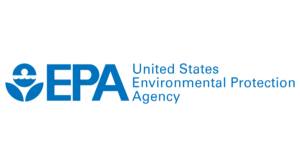August 2019: Guinea Pigs?
In this edition:
- From the Pages of PFASCentral.org: High Fashion, High Performance, High Exposure
- Are We the Guinea Pigs?
- Out with the Old
- UK Parliament Fumes Over Flame Retardants
- PFAS To-Go
- CALENDAR

I hope you are having a relaxing summer. Keynoting the Oregon Clean Water Agencies meeting, I appreciated meeting and hiking with the hard-working and thoughtful people responsible for clean water for the state. Discussing the threat of water contamination from the Six Classes, we shared ideas on reducing harm. For example, when sources of PFAS, such as airports and chrome plating, are identified, they can be controlled. However, we need creative solutions to the possible impact from PFAS in our consumer products ending up in dust and wash water.
Excellent news that important provisions on PFAS, some for which we have long advocated, are included in both the House and Senate versions of the U.S. military budgets–which must pass by early October. These include proposals for moving the military to safer PFAS-free fire fighting foam, monitoring of our nation’s water supplies for many PFAS, setting maximum contaminant levels for some, and requiring emissions reporting. Having worked on the science and policy of PFAS since 2013, we are delighted to see the current interest and action around
these “forever chemicals.”
Our PFAS Central website contains the latest news, curated scientific research papers, policy, events and jobs. Please share your own PFAS news with us for posting. Send your items to [email protected].
For innovative ideas on protecting our drinking water from toxics, check out the website and the podcast What’s in Our Water? Cindy Hu, data scientist at Mathematica and first author on our joint 2016 paper which mapped sources of drinking water contamination in the US, discusses her work modeling to predict which areas have higher risks of PFAS contaminated water. Sampling can then be which areas have higher risks of PFAS contaminated water. Sampling can then be better targeted to prevent contamination.
Some happy news comes from the cleaning products company Seventh Generation. Their charitable foundation will replace 15,000 nap mats containing flame retardants in pre-schools across Vermont. In 2012, our Institute tested nap mats in local preschools, starting with the one my daughter had attended. To our shock, every nap mat contained toxic flame retardants–exposing our children at a vulnerable age. Great that this problem is being addressed at last–and hopefully soon beyond Vermont. With education such as our SixClasses videos, toxic exposures can be reduced and we can all be healthier.
We hope you will enjoy the rest of your summer.
Arlene and the Green Science Policy team
From the Pages of PFASCentral.org: High Fashion, High Performance, High Exposure
by Seth Rojello Fernández

Although PFAS may not get its own runway show in Milan or Paris, it’s a big deal in modern fashion. A recent study found that textile finishing agents used to achieve oil, water, and stain repellency often contain high levels of PFAS. It’s no surprise that PFAS chemicals are behind these performance traits, but the discovery that some clothing contains banned PFAS is concerning. The researchers studied several textile finishing products from China and found long-chain PFAS, linked to a host of health problems, at levels that exceeded safety limits set by the European Chemicals Agency. Some of the performance from PFAS might not be necessary in clothes: Do scarves really need to be sweat-resistant, given the risk? Now even high performance brands produce PFAS-free alternatives. High-waisted jeans and neon colors may be making a comeback, but PFAS is one fashion trend that should leave our closets for good.
Are We the Guinea Pigs?
by Joe Charbonnet

An aphorism cautions, “It ain’t what you don’t know that gets you into trouble. It’s what you know for sure that just ain’t so.” The quip describes my reaction to the EPA’s recent plan to eliminate chemical testing using lab animals. Initially, I was sure that less animal testing was a good thing.
But disclosed communications between the EPA and chemical companies suggest that more than animal welfare motivated this move. An investigative report reveals that regulation of new chemicals will become more difficult, if not impossible, without animal toxicity testing. Without animal studies to show harm from toxics in everyday products, our population will continue to be exposed, and become the guinea pigs.
Mammal research on a new chemical can be crucial for quickly discovering adverse effects so our population can be protected. Otherwise, toxic impacts may not be identified until humans have been exposed for decades. This scenario is playing out in Wilmington, NC, where residents’ blood contains previously unstudied PFAS chemicals.
Toxicologists can minimize animal testing using sophisticated computer models–as they should. However, chemicals and organs interact in surprising ways. Our bodies can transform compounds into different toxicants. This complexity means that, for now, animal tests are an important tool to protect humans. While I want to believe that eliminating animal testing is an altruistic endeavor, this ain’t always so.
Out with the Old
by Tom Bruton

In June the EPA announced that it intends to ban most uses of deca BDE, a brominated flame retardant once commonly used in electronics, plastics, and textiles. The decision comes ten years after the two U.S. manufacturers of deca BDE agreed to a phaseout of the chemical, and twenty years after its persistent, bioaccumulative, and toxic properties became widely known to scientists. Use of deca BDE is already restricted by more than 150 countries via the Stockholm Convention, which the U.S. has not ratified. Kudos to EPA for making the right call, finally.
However, the main replacement for deca BDE is deca ethane, a similar chemical which is as yet unregulated in the US. This regrettable substitute for a high volume flame retardant is another reason we need to follow the class concept.
UK Parliament Fumes Over Flame Retardants
by Seth Rojello Fernández

Last month the UK House of Commons Environmental Audit Committee released their Toxic Chemicals in Everyday Life report, centered around flame retardants. The British press heralded the news that Britons had Europe’s highest flame retardant exposure with headlines like, “British mums have some of world’s most fireproof breast milk.“
What’s behind the high levels of flame retardants in the British? The answer may be that the UK remains the only nation with an open-flame standard for furniture that has to be met with large amounts of flame retardants. The committee recommended changing safety standards from the outdated open flame ignition test to a smolder test. This standard would increase fire safety without the addition of toxic flame retardants. The committee also recommended banning any designated “substance of very high concern” in food contact materials. Some kitchen equipment, cutlery, utensils, and dishes contain toxic chemicals, including flame retardants and PFAS. The report also advised targeted studies of groups such as firefighters, to better understand the exposure and health effects of toxic chemicals.
We appreciate certain eccentricities (fondness for marmite comes to mind) in our friends across the pond. But chemical safety is one area where we think Britain should join the rest of the world and abandon the open-flame standard. The parliamentary committee urged the British government to adopt a stronger chemical policy and championed the class concept for chemical management. Cheers to that.
PFAS To-Go
by Heather Stone

Take-out food usually comes in compostable food containers these days. Sounds good, since composting reduces waste, right? Unfortunately, food containers advertising natural materials often contain PFAS. The benefits of composting may be diminished by the forever chemicals in the “biodegradable” packaging.
A recent study published in Environmental Science & Technology Letters found higher PFAS levels in compost containing biodegradable food packaging vs. without. When the compost is applied to crops or gardens, the PFAS could be taken up by plants and enter our food chain and our bodies. The City of San Francisco and the Biodegradable Products Institute (BPI) have decided, quite logically, that to be labeled compostable, a product cannot contain PFAS. Starting January 1, 2020, all BPI-certified compostable packaging must be free of these harmful chemicals. We hope this will encourage manufacturers to produce food packaging without the added flavor of PFAS.
CALENDAR
August 12, 2019: SETAC Focused Topic Meeting on Environmental Risk Assessment of PFAS
- Location: Durham, North Carolina
- Tom Bruton will be presenting on exposure to PFAS at contaminated sites. Details here.
August 24, 2019: People’s Pharmacy Interview with Arlene Blum
- Arlene will be interviewed on the dangerous substances added to everyday products. Here is a link to the stations that carry the program – broadcast times vary. The podcast will be available at iTunes and their web store as of August 26, 2019.
September 9, 2019: UC Berkeley Science, Leadership, and Management Group (SLAM)
- Time: 5:30 PM
- Location: 177 Stanley Hall, UC Berkeley Campus
- Joe Charbonnet will be presenting to the group on “Sewers to Slabs: Radically Reimagining a Less Toxic World.” Details here.
Receive Updates By Email
Subscribe to our monthly newsletter and get these updates delivered right to your inbox!